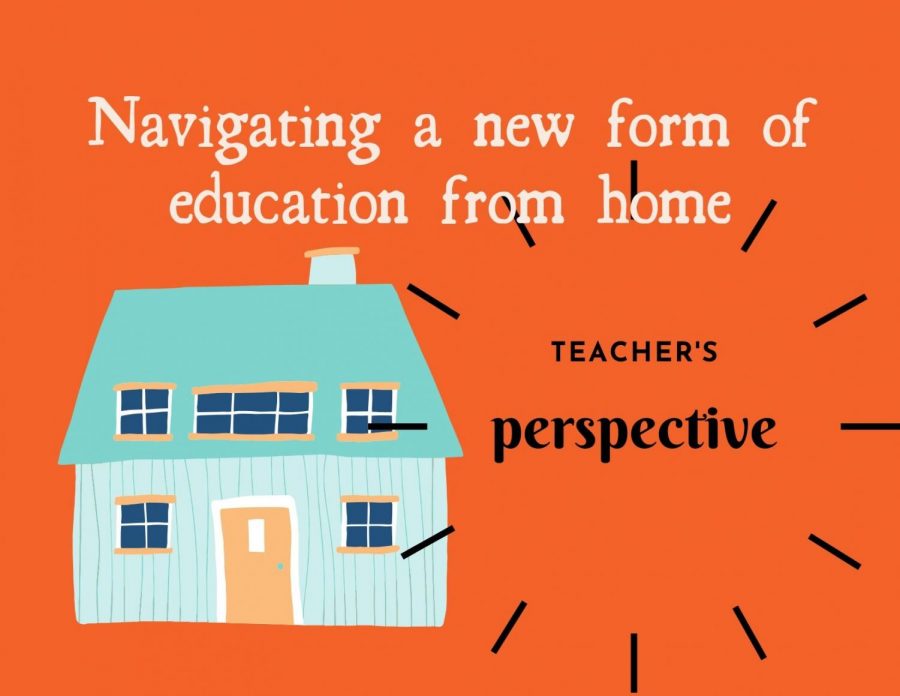Navigating a new form of education
Online learning through the eyes of teachers
May 21, 2020
Teaching is hard enough as it is, especially when students are constantly falling asleep in class at 7:30AM. However, since the Covid-19 pandemic struck, students in schools across the country haven’t had to deal with teachers bugging them to take headphones out of their ears or assigning them lunch detentions.

Even though problems like these have vanished, online learning has brought many other concerns with it. Not only are these concerns being brought to the attention of students and their parents, but it is up to teachers and administrators to handle them, along with juggling their own individual workload.
“The biggest challenge I have faced as a teacher is being able to provide the same type of direct instruction as I would if we were in the classroom together,” said English teacher Marie Finnegan-Copen.
Teachers are struggling to keep the same pace and style they once had in their classrooms. Transitioning face to face lessons to brief zoom meetings once a week has been tough. Whether this be through extremely organized Schoology folders or last minute Zoom call meetings to explain the work of the duration of the week each teacher has a different way of introducing a new lesson.
“I organized the Schoology activity folders to mimic as closely as possible the manner in which we would approach topics and materials together in a classroom,” said Copen.
To accommodate this new way of learning some teachers have found themselves lessening their students workload and assigning more straight forward activities.
“The SOL’s have been canceled,” said History teacher Raymond Obispo. “Lessons have been trimmed down and student accountability has been modified. There are no ‘grades’ for the last grading period.”
Whole units are reduced to weekly assignments via a ‘Choice Board’. Whatever teachers planned for the entirety of the year has mostly gone out of the window. However, that does not mean that teachers are less dedicated to students and their learning.
Teachers are increasing their own workload to further their students’ understanding of the class’ content.
Along with figuring out how to convert certain teaching methods into the emergency learning plan, teachers now have to spend their time emailing and contacting students and parents to make sure they know what they need to do and how they need to do it.
“I miss the smiles, I even miss the days when I wondered if I helped anyone, because that means I’m being introspective,” said French teacher John Mueller. “Even at my age, I like to feel as though I’m still capable of growth and learning more.”
As many have realized during this pandemic not all change is bad. These drastic changes will likely make us better and more prepared for the unexpected in the long run. Even in spite of all that’s stacked against them, teachers are still finding ways to interact and connect with their students.

